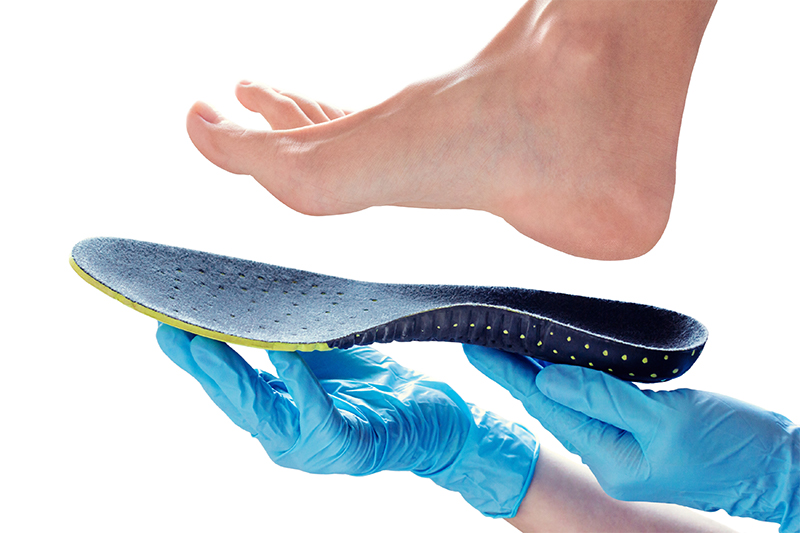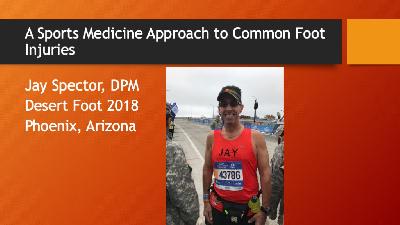
Practice Perfect 661
Has Podiatry Lost Biomechanics?
Has Podiatry Lost Biomechanics?

For any podiatrists reading this I hope the title of today’s Practice Perfect frustrates you and has you responding with something like, “No way, it hasn’t.” For my part, I hope we haven’t lost biomechanics.
However, much of the evidence points to the conclusion that podiatry may be in the process of relinquishing this aspect of our profession. In research, while podiatry has remained enamored of the biomechanics of Root and its application to foot orthoses, other professions such as physical therapy and kinesiology have published ever-increasing numbers of papers. The orthopedic foot and ankle surgeons continue to publish papers on the biomechanics of ankle implants among many others.
Want to obtain an advanced degree focused on the biomechanics of the lower extremities? Can’t do it in podiatry. Nary a single biomechanics fellowship exists, despite the ever-growing number of other types of fellowships. Want a PhD? Not from any of the podiatry schools. You’ll have to attend a university with a department doing this type of research.
Feeling nostalgic about biomechanics?
The podiatry colleges still teach biomechanics, that’s true. But even as far back as 20 years ago when I started school, few people seemed to deeply understand the biomechanics of the lower extremity. One of my colleagues called it “biomagic,” emphasizing what appeared to be a lost art and a lack of science. There are still teachers at the colleges who are incredible funds of knowledge and do an excellent job teaching this topic. But they seem to be drowned out by the seemingly more sexy surgical subjects.
How about residency education? At the last residency interviews in January, the Council on Teaching Hospitals (COTH) put on their yearly faculty education session. During the discussion they informally polled the audience about the current biomechanical examination numbers required to graduate, and I was shocked to see that a relatively large number of people were in favor of actually decreasing the requirement.
That requirement, by the way, is a paltry 75 examinations. Given the COTH survey results, I imagine some reading this would think that number is appropriate or even high. Let’s put this number into a little perspective. The other requirements include 300 foot and ankle surgeries and 1,000 patient encounters. So only 75 out of 1,000 patient encounters needs to include a complete biomechanics exam?
We’re talking about biomechanical examinations being 25% of surgical numbers and 7.5% of total required encounters. Does this tiny number of examinations that, in the past, was the primary factor separating us from other professions, still seem appropriate?
Remember that almost every patient we see with the vast majority of diagnoses has some biomechanical cause or contributing factor. Can you effectively treat plantar fasciitis without a biomechanical exam? How about hallux valgus? Calluses? Neuropathic ulcers? Flatfoot disorders? I could keep going, but you get my point.
You see, the real problem with this – besides giving up our hegemony as the premier experts of the foot and ankle (a bad enough prospect) – is that our patients will suffer from our lack of understanding of biomechanics. If you don’t understand how the lower extremity works, how can you be any good at treating pathology? How can you plan a surgical procedure to help a patient? Do you perform calcaneal osteotomies for flatfoot pathologies because you know what the procedure will do to the patient or because your residency attending told you to do it? Are we back to “do it because I said so” and trial-and-error now?
We are in the process of losing biomechanics, but there are some organizations trying to stop that. I applaud the American Board of Podiatric Medicine (ABPM) for the work they have recently done to address one aspect of this problem: residency training. If we graduate residents incapable of understanding or applying biomechanics, then the future will look significantly different from the past.
Recently, the ABPM made available for free pathology-specific biomechanical examination forms, available at abpmed.org. You can also click here for the documents. Why should residency programs use these forms? Well, for starters, it makes it easier to create a note that qualifies as a biomechanical encounter. Second, and more important, these forms provide a framework that residents can use to think about the pathology in front of them. These forms are also easily importable into Electronic Medical Record systems; I was able to do this on my University’s EMR. Incidentally, ABPM has also created an app with these same templates and other helpful resources. Click to install APPLE IOS version of ABPM App. Click to install Google Android version of ABPM App).
ABPM has created and made freely available pathology-specific biomechanical examination forms.
Kudos to ABPM for doing something to help the profession. What else can we do? I’ll close out this discussion with a short list of ideas that would help both maintain our reputations and our patients’ health.
- Fellowship at the Colleges - Our colleges should each create a paid fellowship in lower extremity biomechanics. If not possible at all locations, then consider consolidating resources to sponsor two or three national programs.
- Research Labs - Graduates from the fellowships should be assisted to create research labs or research-oriented positions at the schools that would work with our national organizations to participate in high quality research studies.
- It’s Not Orthotics vs Surgery - Stop thinking of biomechanics as orthotics vs surgery. It’s time to integrate. More on this in the near future.
- Increase Biomechanics Exams Required in Residency - Increase the required resident biomechanical examinations to 150. Yes, double the numbers, not decrease them. Residents must learn to think appropriately and correlate the exam with diagnosis and treatment.
- Increase Biomechanics in Post-Graduate Education - Greatly increase the time spent on biomechanics at our national conferences. I would push for a full day of biomechanics-related subjects at all conferences, including ACFAS.
- Start Students Off Right - Bring all this back to our students. Fellows should teach the students. Students should be given the opportunity to work in the biomechanics labs and maybe even do their own research.
The bottom line, here, is without contributing more heavily to research on biomechanics and teaching our trainees how to think biomechanically, then podiatry’s statement that we are the premier foot and ankle specialists will be nothing but empty lip service. Podiatry without biomechanics? That would be like physics without math. Would that make any sense? I don’t think so.


































Comments
There are 1 comments for this article
I've seen the ABPM Biomechanics template presented by Marc Benard, DPM and it is excellent. Every podiatrist will want to be using it once they see it.